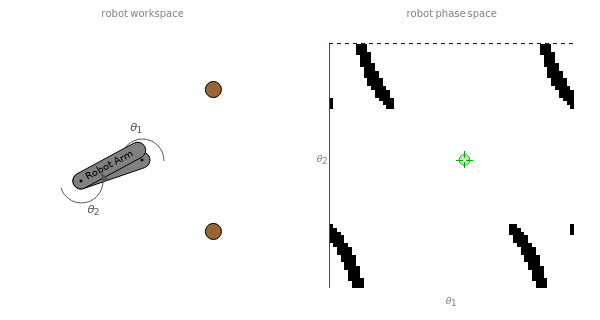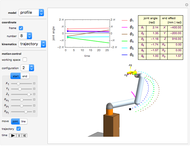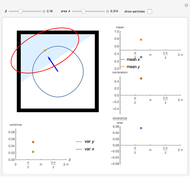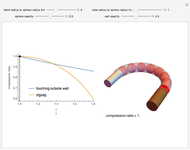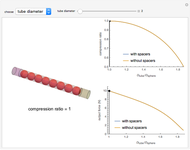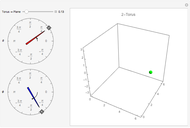Robot Motion with Obstacles

Requires a Wolfram Notebook System
Interact on desktop, mobile and cloud with the free Wolfram Player or other Wolfram Language products.
This Demonstration shows a two-link planar arm robot operating in the workspace on the left, containing two small circular obstacles. The corresponding robot phase space on the right shows the configurations  for which an arm intersects an obstacle. You can relocate an obstacle in the workspace and see the corresponding change in phase space. Move the locator in phase space vertically or horizontally to rotate the robot arms. The angles
for which an arm intersects an obstacle. You can relocate an obstacle in the workspace and see the corresponding change in phase space. Move the locator in phase space vertically or horizontally to rotate the robot arms. The angles  and
and  are expressed modulo
are expressed modulo  . The obstacle regions are computed using
. The obstacle regions are computed using  unit squares. You can improve the quality of the computation by increasing
unit squares. You can improve the quality of the computation by increasing  .
.
Contributed by: Aaron T. Becker and Haoran Zhao (April 2016)
Open content licensed under CC BY-NC-SA
Snapshots
Details
The set of all possible configurations of the robot can be represented in a two-dimensional phase space. Of particular interest are the configurations in which the robot collides with one of the obstacles.
This Demonstration computes the obstacle regions using  unit squares and determines if the centroid of each square is in a collision. Given
unit squares and determines if the centroid of each square is in a collision. Given  and
and  , the motion computation is trivial.
, the motion computation is trivial.
However, computing the phase-space obstacle region is more difficult, because the size of the space representation grows exponentially with the number of degrees of freedom (independent joints) of the robot.
Consider how many  -dimensional unit squares are required to fill a space of size
-dimensional unit squares are required to fill a space of size  . For a one-dimensional space,
. For a one-dimensional space,  units are needed. For a two-dimensional space,
units are needed. For a two-dimensional space,  squares are needed. For an
squares are needed. For an  -dimensional space,
-dimensional space,  hypercubes would be required.
hypercubes would be required.
The phase space for a two-link planar robot can be represented on a torus. When rotation joint 1 moves past  , it returns to angle 0. This is represented by dashed and solid lines of the same color. If the phase space were printed on a rubber sheet, cut out, and the dashed and solid lines of each color were joined, the resulting shape would be a torus. In this Demonstration, moving the locator past the edge of the phase space wraps the angle around
, it returns to angle 0. This is represented by dashed and solid lines of the same color. If the phase space were printed on a rubber sheet, cut out, and the dashed and solid lines of each color were joined, the resulting shape would be a torus. In this Demonstration, moving the locator past the edge of the phase space wraps the angle around  .
.
Reference
[1] M. Spong, S. Hutchinson, and M. Vidyasagar, Robot Modeling and Control, Hoboken, NJ: John Wiley and Sons, 2006.
Permanent Citation
